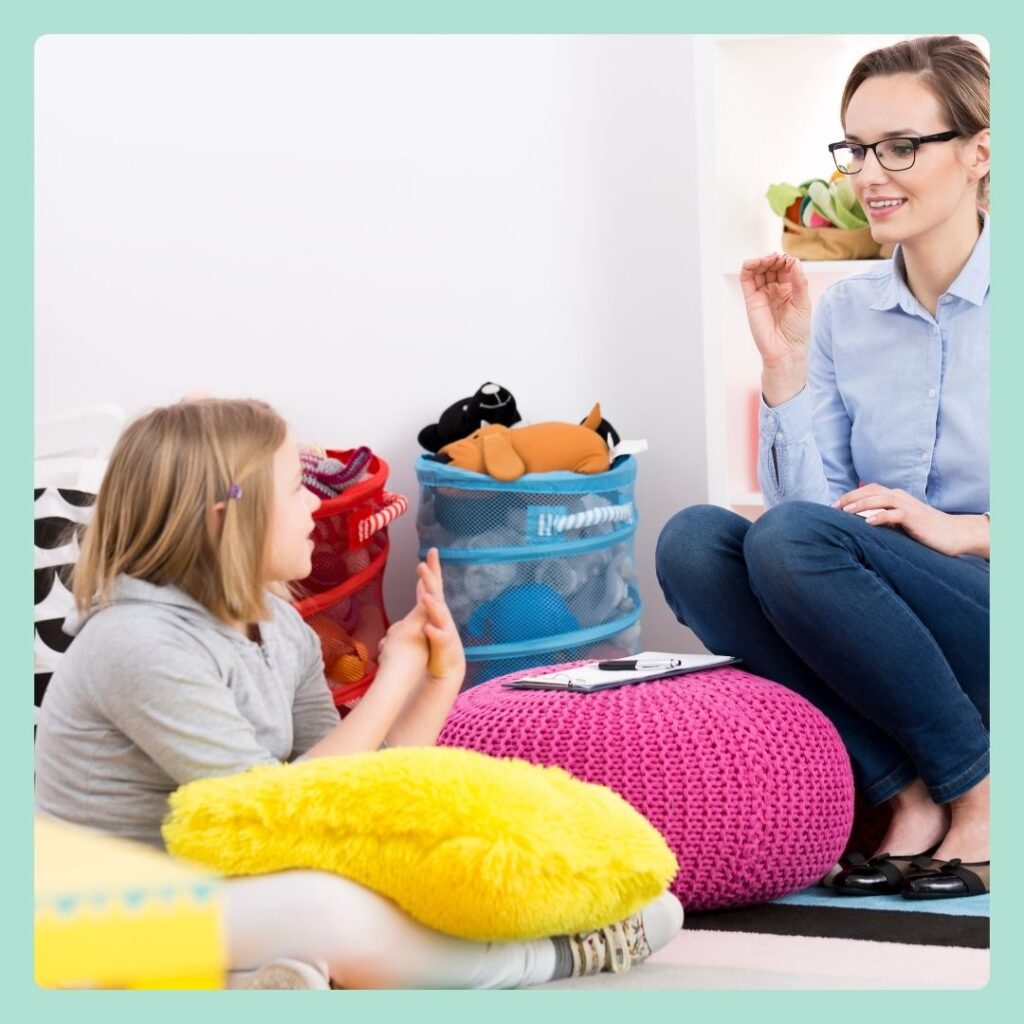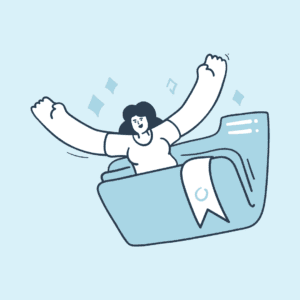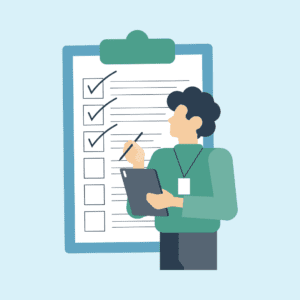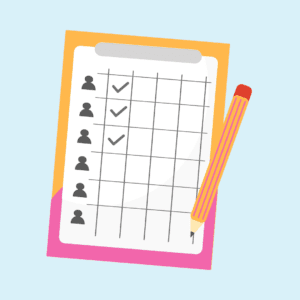As a school counselor or other mental health provider in a school, you rarely have the resources to see students in individual counseling long-term. You also might not be trained to handle more chronic psychological disorders. This is why ASCA recommends that you only use individual school counseling short-term as a responsive service for acute difficulties.
That said, I also wouldn't be surprised if many of you had a student on your caseload for an entire school year with no end in sight. Or students who you thought would be short-term and the issues are school-based, but the progress is slow as a snail.
So how do we keep individual counseling short term and effective? I have one thing to stop doing and 6 things to try.
Don't Set Arbitrary Limits
ASCA doesn't tell you to only see a student for 6 sessions or 12 sessions and then stop. They want you to setup systems that let you provide support to as many students as possible.
Individual counseling is a time intensive service that quickly limits the number of students that can be seen. It is also a necessity for some students. So we have to be thoughtful and purposeful, not rigid about how we use it.
Instead of having a set (arbitrary) number of sessions, think about the goals the student needs to meet, what services are best to get the student there, and how long it would take. Sometimes, I worry that we have a specific number of sessions in mind without a clear plan, the student doesn't make progress, and then we say we "don't do long-term counseling".
Counseling is not the same as reading intervention, but I think we are more effective as school-based practitioners when our approach is more similar to a reading specialist than a clinical psychologist.
Goal Focused From Start to Finish
One of the goals of counseling, particularly if you use a brief solution-focused approach or a cognitive-behavioral approach, is to teach the student the skills to be their own counselor and to do that over a short time. We want them to have the skills and knowledge to manage whatever situations they find themselves in.
In short-term individual counseling, make clear to the student that that is the goal from the beginning. They are learning skills to manage situations on their own, just like if they needed to learn strategies to become a better reader. Once students understand that we are meeting for a finite amount of time and we have a singular goal (them being their own counselor), we can get into specifics.
I take a big, specific goal (e.g., learning to handle disappointment without getting really angry), and break that into smaller skills. What does this student have to be able to do to learn how to handle that situation on their own? I share with the student what we are going to work on and how long I think it will take. Keeping them in the loop keeps them motivated and focused on their progess.
Backwards Planning
If the student's needs are a good fit for short-term individual school counseling services, create a structured and focused plan for your sessions. If you don't have the bandwidth for long-term counseling, then you definitely don't have the time for chatty check-ins
Teachers regularly use backwards planning when creating their lessons and curriculum, and it's something we should steal adopt.
- Start with a big goal
- List the specific skills needed to achieve that big goal.
- Then create tasks where the student can show those specific skills.
- Finally, create activities that help the student learn those specific skills.
We don't want to start with the activities because not everything labeled anger management is going to meet your students needs and we are on a tight schedule. 🙂
Use Routines and Templates
Now, I'm over here telling you to create structured plans and assessments for individual counseling. Meanwhile, you are telling me "I didn't eat lunch until 3pm today."
Cut down on the planning you have to do by using routines and reusable activities.
Follow The Same Agenda
Every single individual counseling session can follow the same agenda. The routines will save you time and keep you and the student focused. Start collecting activities for each part of the session. For example, have different warm-up exercises and cool downs ready and pick the ones that relate to the student's difficulties. Here is a sample agenda for each session.
- Feelings check-in
- Warm-up exercise
- Mini-lesson on specific skill
- Guided activity to practice skill
- Independent activity to show skill
- Cool down exercise
- Exit ticket (optional)

Reusable Templates
I always used reusable templates in individual counseling. One template I found myself drawing over and over again were these "decision maps" that broke down the decisions that a student made that led to a negative outcome. We would map out what they were thinking, feeling and doing. Then we would consider where we could have made a different decision and gotten a different outcome.
Could you have asked for help instead of putting your head on the desk? Could you have used a strategy like positive self-talk to change how you felt about the frustrating work?
I'd also use these to help them when they knew a difficult situation was coming up.
Collaborate with Teachers and Parents
Studies of short-term cognitive behavioral therapy show that involving parents in carrying over strategies improves the success rates and long-term change dramatically.
Teachers are also ideal partners to help carry over strategies and make changes permanent. If they can see a clear map to an end goal, they are more likely to stick with supporting the student.
- Try sending home weekly summaries of what the student has done in counseling. Keep them short and sweet with one strategy that can be prompted in the classroom or at home.
- Make the student's exit ticket from counseling each week to jot down what strategy they are going to use that week. Then take a picture and send it to their teacher and parent.
Refer Out
Now is this looking like a much more intensive service and less skill-based? Then consider an outside referral, a combination of school and outside services, or an eventual special education referral. This will all depend on your school and resources available.
Important - If a student is struggling and it's preventing them from accessing their education, it is still the school's responsibility to support them. As a counselor with limited resources, you can advocate for additional providers to meet that obligation. Just because you don't have the availability doesn't mean the student isn't entitled to the service. Make sure your administration understands how much you can take on, and what your program is for and not for.
Working with Outside Providers
Coordination and communication with outside providers is essential and frequently difficult. Work on a directory of community-based service providers that you can refer parents to and also are easy to work with.
I made it clear to therapists that I would like to recommend them to other families. This usually helps with their availability. I also check in with parents to see if they would be willing to talk with a parent looking for a therapist.
Keep a record of which student sees which therapist. Then schedule a monthly check-in with that therapist and get a release of information from parents. You can also offer to have the therapist come to the school to do a parent workshop. It strengthens your connection, provides a service to the community, and also helps a therapist find new clients.
Combine Services
Consider tagging individual counseling onto group services for students who need a bit more. Instead of meeting every week for 30 minutes, have an individual session once a month.
Sometimes, I would have a group with 5 or 6 students and I'd see two of those students for individual sessions 1x/mo. If the scheduling gods were feeling kind, I would be able to schedule four students a month for 1x/mo individual counseling to reinforce and practice what we had been doing in group counseling.
How can you keep your individual school counseling short-term while also being effective and goal driven?








